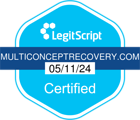As deaths from heroin and powerful painkillers skyrocket nationwide, governments and clinics are working to put Narcan (a drug that can reverse an opiate overdose) into the hands of more paramedics, police officers and the closest advocates say are the most critical group — people who abuse drugs, and their friends and families.
What Exactly Is Narcan (Naloxone)?
Narcan may be something you’ve heard of, particularly recently, but do you know what it is? It’s a key part of the opioid epidemic, and the use of Narcan is helping save lives when people overdose on opioids.
Narcan is the brand name of the generic naloxone, and it’s described as an opiate antidote. Narcan or naloxone is administered to people, to reverse the effects of an overdose of heroin or other opioid painkillers. It isn’t necessarily new, as it’s been used in emergency rooms and by first responders for several years. What is new, however, is the rising number of people who are overdosing on opioids as we’re amid a very serious opioid epidemic.
As a result, in some states across the country, if you have a loved one who is addicted to heroin or a narcotic prescription painkiller, you can carry naloxone. There is an injection, but typically individuals who carry Narcan use the nasal spray version of it, which fits in a pocket and is easily transportable.
A Second Chance at Life for Those Struggling with Addiction
Narcan isn’t the “solution” solution to the growing number of opioid overdoses gripping the U.S., but it provides a second chance to intervene with proper treatment. Addiction is a chronic, relapsing brain disease, therefore, anything we can do to offer a second chance to those suffering from it is a valued option. It’s entirely possible that somebody saved by Narcan will overdose again the very next week, but without the widespread use of Narcan, the other possibility—that the near-overdose will serve as a wakeup call and he or she will go into treatment—wouldn’t even have the chance to become reality. Narcan helps us save lives, and with some encouragement and awareness-raising, it could help more opioid abusers get into treatment and challenge the underlying problems that lead to addiction.
